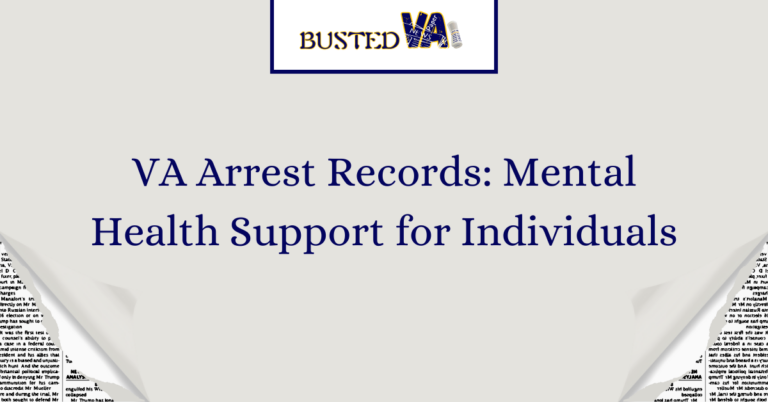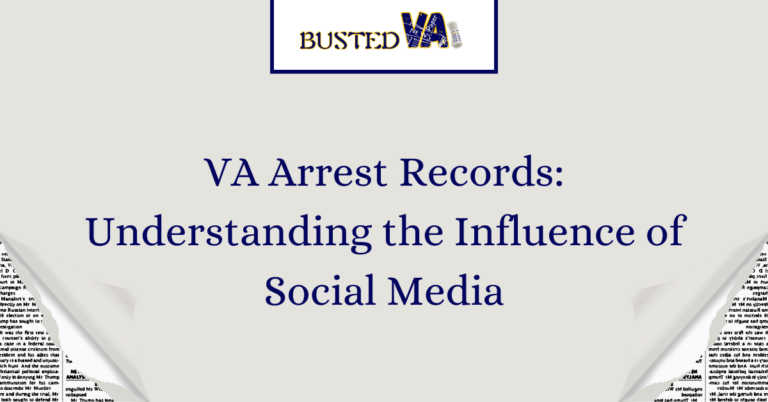VA Mugshots and Recidivism: Factors and Prevention Strategies
VA mugshots serve as a visual record of individuals who have been arrested by law enforcement agencies in the state of Virginia. While mugshots are commonly associated with the criminal justice system, they play a significant role in influencing recidivism rates, which refers to the tendency of previously convicted individuals to re-offend. In this article, we will delve into the factors contributing to recidivism and explore potential prevention strategies.
Understanding VA Mugshots
VA mugshots are photographs taken by law enforcement at the time of an individual’s arrest. They serve multiple purposes, including identification, evidence, and record-keeping. However, the publication and dissemination of these images can have long-lasting consequences for individuals, even if they are not convicted of a crime. Legal considerations regarding the release of mugshots vary, with some states imposing restrictions to protect the privacy and rights of individuals.
Recidivism: Definition and Impact
Recidivism refers to the tendency of individuals to re-offend after being released from incarceration or completing a sentence. It not only affects the individuals involved but also has broader implications for communities and society as a whole. High recidivism rates strain resources within the criminal justice system, perpetuate cycles of crime and incarceration, and hinder efforts towards rehabilitation and reintegration.
Factors Contributing to Recidivism
Several factors contribute to high recidivism rates, including socioeconomic disparities, lack of access to education and employment opportunities, substance abuse, and mental health issues. Individuals from disadvantaged backgrounds often face systemic barriers that hinder their ability to reintegrate into society successfully. Additionally, the lack of adequate rehabilitation programs within correctional facilities further exacerbates the likelihood of recidivism.
The Role of VA Mugshots in Recidivism
The publication and dissemination of VA mugshots can significantly impact an individual’s likelihood of re-offending. Being publicly associated with criminal activity can lead to stigmatization, discrimination, and social ostracization, making it challenging for individuals to secure employment, housing, and support networks upon release. Moreover, the psychological toll of having one’s image associated with a criminal offense can impede efforts towards rehabilitation and reintegration.
Prevention Strategies
Addressing recidivism requires a multifaceted approach that focuses on rehabilitation, reintegration, and community support. Investing in education and vocational training programs within correctional facilities can equip individuals with the skills and resources necessary to succeed upon release. Additionally, providing comprehensive substance abuse and mental health treatment can address underlying issues that contribute to criminal behavior. Community-based support networks and initiatives aimed at reducing stigma and discrimination can also play a crucial role in facilitating successful reintegration.
FAQs
What are VA mugshots, and why are they taken?
VA mugshots are photographs taken by law enforcement agencies in Virginia at the time of an individual’s arrest. They serve various purposes, including identification, evidence, and record-keeping. Mugshots are taken to document the physical appearance of individuals at the time of their arrest.
How do VA mugshots impact individuals’ lives?
VA mugshots can have significant repercussions on individuals, even if they are not convicted of a crime. The publication and dissemination of mugshots can lead to stigmatization, discrimination, and social ostracization, making it difficult for individuals to secure employment, housing, and support networks. Additionally, the psychological toll of being associated with criminal activity can impede efforts towards rehabilitation and reintegration.
What is recidivism and why is it a concern?
Recidivism refers to the tendency of individuals to re-offend after being released from incarceration or completing a sentence. It is a concern because high recidivism rates perpetuate cycles of crime and incarceration, strain resources within the criminal justice system, and hinder efforts towards rehabilitation and reintegration. Addressing recidivism is essential for promoting public safety and reducing the societal costs associated with crime.
What factors contribute to recidivism?
Several factors contribute to high recidivism rates, including socioeconomic disparities, lack of access to education and employment opportunities, substance abuse, and mental health issues. Individuals from disadvantaged backgrounds often face systemic barriers that hinder their ability to reintegrate into society successfully. Addressing these underlying factors is crucial for reducing recidivism rates and promoting positive outcomes for individuals involved in the criminal justice system.
What prevention strategies are effective in reducing recidivism?
Effective prevention strategies for reducing recidivism include investing in education and vocational training programs within correctional facilities, providing comprehensive substance abuse and mental health treatment, and implementing community-based support networks. Additionally, initiatives aimed at reducing stigma and discrimination can help facilitate successful reintegration into society. By addressing the root causes of criminal behavior and providing individuals with the support and resources they need, we can work towards breaking the cycle of crime and incarceration.







